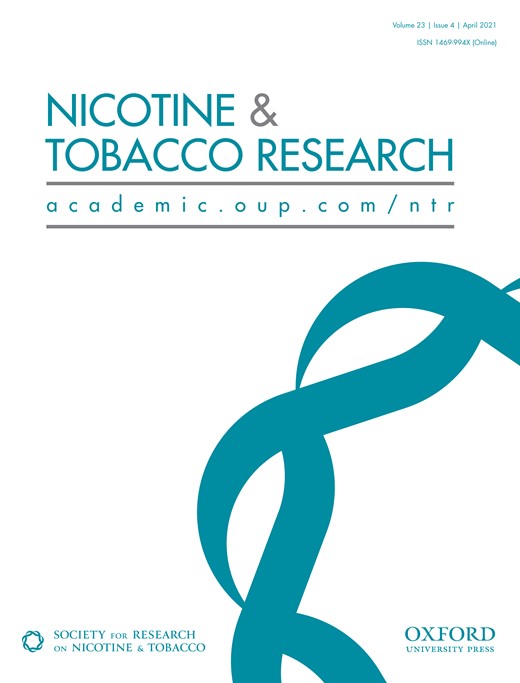-
Views
-
Cite
Cite
Allison M Glasser, Mahathi Vojjala, Jennifer Cantrell, David T Levy, Daniel P Giovenco, David Abrams, Raymond Niaura, Patterns of E-cigarette Use and Subsequent Cigarette Smoking Cessation Over 2 Years (2013/2014–2015/2016) in the Population Assessment of Tobacco and Health Study, Nicotine & Tobacco Research, Volume 23, Issue 4, April 2021, Pages 669–677, https://doi.org/10.1093/ntr/ntaa182
Close - Share Icon Share
Abstract
Understanding the population impact of e-cigarettes requires determining their effect on cigarette smoking cessation.
Using the US Population Assessment of Tobacco and Health cohort, we examined smoking cessation among adult current cigarette smokers at Wave 1 with follow-up data at Waves 2 and 3 (n = 9724).
By Wave 3 (2015/2016), 17.3% of smokers had quit smoking. Smokers using e-cigarettes daily or who increased to daily use over the three waves were two to four times more likely to have quit in the short term (<1 year) and long term (1+ years) compared with never e-cigarette users (p < .001). E-cigarette use in the last quit attempt was associated with a higher likelihood of short-term (<1 year) quitting at Wave 3 (adjusted relative risk ratio: 1.33; 95% confidence interval: 1.04, 1.71) compared with smokers who did not use an e-cigarette in their last quit attempt. Noncurrent (no use in any wave) e-cigarette users and users who were unstable in use frequency were 33% and 47% less likely to quit in the short-term, respectively (p < .001). Flavored (vs nonflavored) and using a rechargeable (vs disposable) e-cigarette device was associated with an increased likelihood of both short- and long-term quitting.
Smoking cessation was more likely among frequent e-cigarette users, users of e-cigarettes in last quit attempt, and users of flavored and rechargeable devices. Less frequent, unstable, past, or never e-cigarette users were less likely to quit smoking. Monitoring the relationship between patterns of e-cigarette and cigarette use is complex but critical for gauging the potential of e-cigarettes as a harm reduction tool.
This study suggests that consistent and frequent e-cigarette use over time is associated with cigarette smoking cessation among adults in the United States. In addition, findings suggest that flavored e-cigarette use and use of rechargeable e-cigarette devices can facilitate smoking cessation. These results underscore the importance of carefully defining and characterizing e-cigarette exposure patterns, potential confounders, and use of e-cigarettes to quit smoking, as well as variations in length of the smoking cessation.






Comments